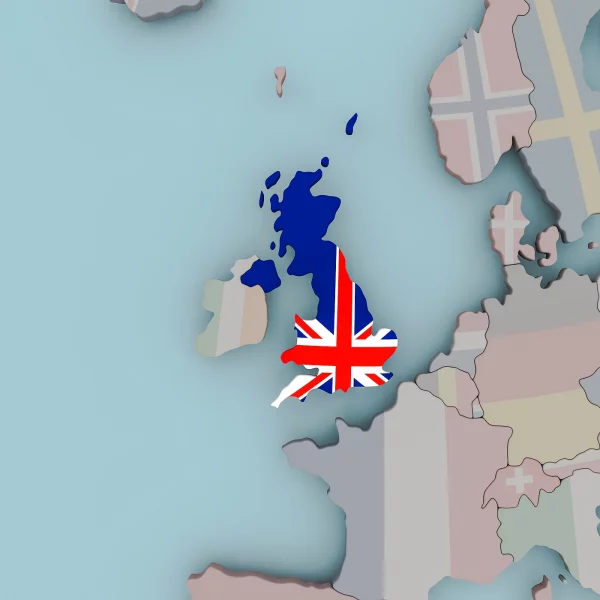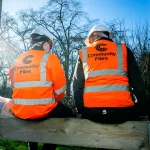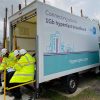Ofcom – UK Gigabit Broadband Cover Rises to 84% as 5G Hits 90-95%

Ofcom has published their annual Connection Nations 2024 digital infrastructure report, which among many other things finds that residential gigabit-capable broadband ISP networks now cover 84% of the UK (up from 78% in 2023), while outdoor 5G mobile cover from at least one operator is available to 90-95% of premises (up from 85-93%). But rural cover remains poor.
The latest CN2024 report typically offers a general overview of fixed line broadband and mobile network availability, as well as related service take-up and data usage from across England, Scotland, Wales and Northern Ireland, which is largely based off data that was gathered during July and September 2024 (varying between the results).
Before we begin, it’s important to note how Ofcom defines the different broadband performance classes. For example, “Decent Broadband” means a 10Mbps+ download speed with 1Mbps+ uploads (i.e. the Universal Service Obligation), while “Superfast” is 30Mbps+, “Gigabit” equates to 1Gbps+ (1000Mbps+) and “Full Fibre” essentially means a pure Fibre-to-the-Premises (FTTP/B) network (these are also gigabit capableand faster).
Advertisement
As usual, we’ve split our summary of the key results from this report into categories for fixed line broadband and mobile networks.
Fixed Line Broadband Coverage
The rapid deployment of “full fibre” broadband networks by various providers continues to be the main area of growth and change during 2024 (Summary of UK Full Fibre Build Progress), which predominantly reflects the efforts of commercial investment in urban areas. But that is starting to change due to the Government’s £5bn state aid funded Project Gigabit programme.
The project, which originally aimed to make gigabit speeds available to at least 85% of UK premises by the end of 2025 (this was recently achieved) and to hit “nationwide” (c.99%) coverage by 2030 (here), is slowly starting to convert early contract awards into tangible build activity across various rural areas. Admittedly, its impact is still modest, but it’s growing.
Overall, the picture today is that the UK’s “full fibre” network coverage has risen from 10% in 2019 (3 million premises), then 18% (5.1m) in 2020, 28% (8.2m) in 2021, 42% (12.4m) in 2022, 57% (17.1m) in 2023 and now stands at 69% (20.7m). Meanwhile, “gigabit” coverage, which is driven by both FTTP and Virgin Media’s HFC (cable) network, has grown from 78% (23.2m) last year to 84% now (25m) – there’s a lot of urban overbuild between the two technologies.
Advertisement
Elsewhere, “superfast” coverage has risen to 98% or 29.4m premises (up from 97% and 29.1m last year), which falls to 89% in rural areas (up from 88%). But the number of premises that cannot get a “decent broadband” service is 0.2% or 58,000 premises (down from 0.2% and 61,000 last year). But this is only true if you include 4G and fixed wireless coverage into the figure, yet if you just looked at fixed line solutions then it would be closer to 1% (385,000 premises), which is down from 410,000 premises last year.
Sadly, many of those that remain in sub-10Mbps areas are often too expensive for even the USO to fix (here and here), but the gap is expected to fall. Ofcom predicts that the number of premises unable to get 10Mbps (decent) broadband could fall to around 48,000 by December 2025, mostly as a result of upgrades via publicly funded schemes (connection vouchers, project gigabit contracts etc.).
Ofcom also provides some useful data on the rural vs urban coverage split for superfast, decent broadband, full fibre and gigabit lines below – split by region.

Advertisement
In terms of take-up, some 75% (up from 72%) that are able to get a “superfast broadband” service actually take it (this will formally trigger a review of USO speeds), while 35% or 7.5 million premises have taken a “full fibre” network (up from 28% last year). But it’s also noted that 52% of premises in rural areas have taken full fibre, compared to 32% in urban area. However, we’ve yet to find a take-up figure for gigabit-capable networks in the new report, which is a bit odd (last year it was 42%).

Elsewhere, the average monthly data usage per connection is now 531GB (GigaBytes) per connection across “all technologies“, which rises to an average of 766GB for full-fibre connections only. This is a bit of a different methodology from last year, and so we can’t compare. Sadly, the regulator doesn’t provide a similar figure for mobile networks, but it’s usually a lot less.
Ofcom’s report also includes a new sub-section, which provides performance data for broadband services on different networks. Customers are moving to higher speed services, with UK “average maximum download speeds” now up from 170Mbps in 2023 to 223Mbps in 2024. We also get a useful breakdown by technology for this.

Natalie Black, Ofcom’s Networks and Communications Group Director, said:
“It’s a record-breaking year for broadband in the UK, as the roll out of full fibre continues to steam ahead.
Whether you’re running a business, streaming your favourite programmes, or doing Christmas shopping online, it’s more likely than ever that you’ll be able to benefit from a fast and reliable broadband connection.”
The regulator’s report also includes a few other interesting details. For example, legacy voice / phone (PSTN) connections now account for just 27% of all landline connections as consumers move to either a broadband-only home or digital voice / VoIP style solutions (down from 41% last year). Most PSTN and related Wholesale Line Rental services are due to be switched off by December 2025, but vulnerable users have until 31st January 2027.
In addition, there are also resilience risks associated with legacy technologies and extreme weather events. For example, this year saw a 45% rise in the number of PSTN incidents reported to Ofcom, although there was a 55% decrease in the number of PSTN service hours lost. On extreme weather incidents, the number of outages fell during the 2023/24 storm season, but certain events such as Storms Isha and Jocelyn caused significant impacts.
In total, fixed network incident reports increased substantially from 600 in 2023 to 910 in 2024, while mobile network resilience incidents reported to Ofcom increased from 609 in 2023 to 696 in 2024.
Mobile Coverage
The report includes coverage data for mobile networks too, such as via the usual 4G and 5G based platforms that most people should be familiar with. The UK has four primary network operators (MNO) – O2 (VMO2), Three UK, EE (BT) and Vodafone – plus an assortment of virtual operators (MVNO) that piggyback off those.
Ofcom found that between 88-89% of the UK’s landmass (geographic coverage) can now access a 4G network if you look across all operators (up from 80-87% last year) or 95% from just one operator. The new £1bn Shared Rural Network agreement aims to push geographic 4G coverage to 95% by the end of 2025 (here) and, in the long run, this should also aid 5G.

As for 5G, the regulator found that it is available from at least one MNO (operator) at around 90-95% of UK premises (up from 85-93% last year) or 61-79% from all operators combined. In addition, 5G was found to be deployed in 42% of sites in urban areas, compared with just 16% of sites in rural areas.
The deployment of mobile end-to-end 5G Standalone sites (these remove all dependence upon slower 4G services) has also increased to around 3,300 sites this year, representing just below 15% of reported mobile 5G sites. These sites carry 14% of the total 5G monthly traffic, representing around 3% of overall monthly mobile traffic in the UK. But 4G continues to carry the vast majority (78%) of all mobile data traffic (down from 81%).
The MNOs also started switching off their 3G networks during 2024. The number of customers using devices reliant on 2G or 3G connectivity has fallen sharply, from approximately 2.4 million reported last year to 2.1 million this year.
Finally, satellite services (mostly thanks to Starlink) are expanding as a new option for people and businesses to access broadband. In 2024, there were 87,000 connections across the UK, a more than doubling from 42,000 in 2023. The majority of these customers are in rural areas, with relatively high numbers (8%) of these premises in areas with no access to decent broadband from fixed lines or FWA services.
Elsewhere, we were able to find some geographic 4G coverage figures for individual mobile operators, which covers both 4G and 5G.
2024 Geographic UK Coverage by Operator
4G
EE 89%
Vodafone 89%
O2 88%
Three UK 89%5G
EE 35-42%
Three UK 9-23%
O2 21-28%
Vodafone 8-15%NOTE: The range reflects Ofcom’s high vs very high confidence figures.
Otherwise, you can check out the full Connected Nations 2024 report online.
Mark is a professional technology writer, IT consultant and computer engineer from Dorset (England), he also founded ISPreview in 1999 and enjoys analysing the latest telecoms and broadband developments. Find me on X (Twitter), Mastodon, Facebook, BlueSky, Threads.net and Linkedin.
« Study Finds Patchy Mobile Coverage on the East Coast Mainline






















































Not true about 5G coverage.
It’s a lie.
The coverage across the country is very poor. Wake up people. Mobile phone coverage is a joke in the UK.
You know it is and still don’t say anything.
Sigh. The headline 5G coverage figure quoted is for at least one operator. The coverage per company is much lower.
I still don’t believe fibre rollout numbers.. I have yet to still get it and everywhere around me has..
If everywhere around you has fibre it would rather suggest the figures are true. They would only be untrue if your anecdote expressed the view that nowhere around you has it.
I’m a little villager just 8 miles from Bath. I can only get a copper connection circa 15mb connection.
Half the village has truespeed GB.
I use LTE for my provision, because that’s all there is, 100mb down 20up.
I have enquired to Openreach for a fibre from a pole 250metres away. I was told £20,000, and it will take a year, and I’ll only have a 300mb connection.
As usual officialdom anticipating the first cuckoo of spring . . . about 10 years in the future. . . . . most of the mobile ISPs in my location have maps which show 5G as easily available outdoors. I think I was able to obtain a 5G signal once upon a time about 2 years ago . . .and that was it . . . .never again.
And as for 4G coverage, its a red letter day if you get 20Mbps on a data download . . . . average during the slack times is 7Mbps and during the heavy usuage times its 3Mbps, with some providers services suffering Upload faster than download (I presume they are over-subscribed in my local cell)
And that’s suburban NW London.